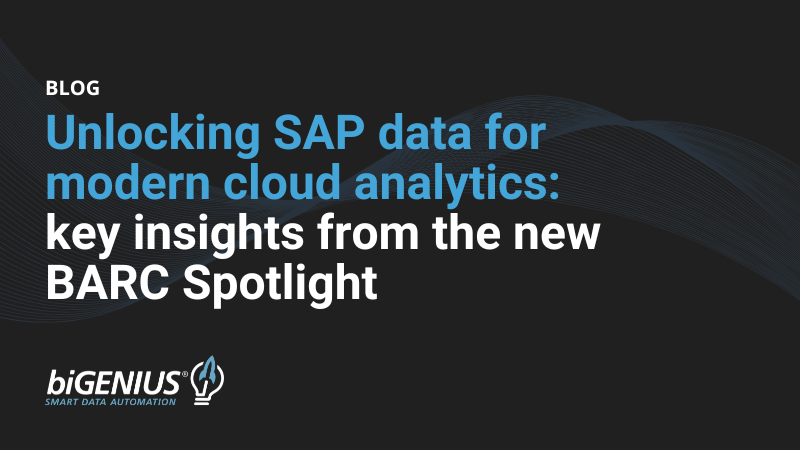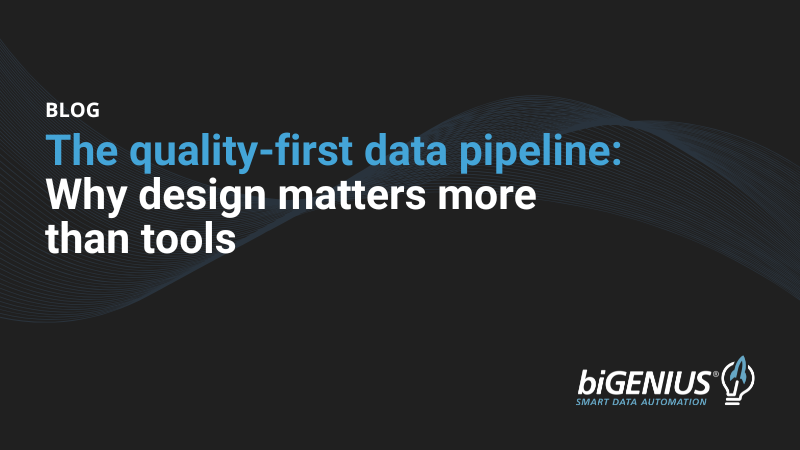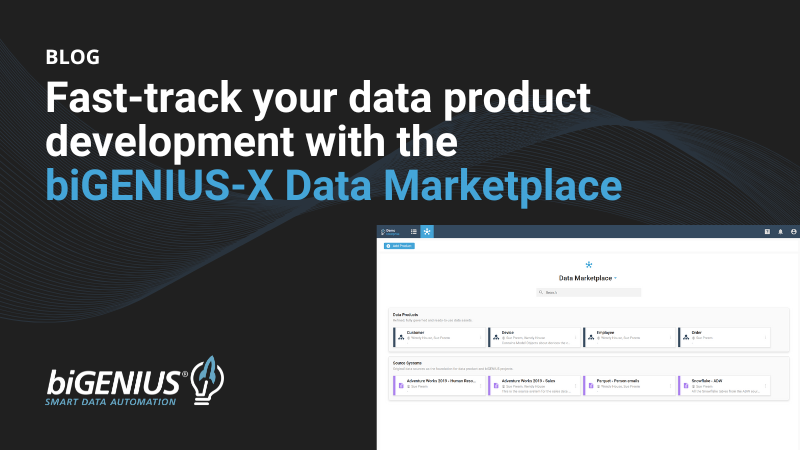It’s that time of year again as the old year ends and the new year begins. For many of us, this is the time we feel optimistic and enthusiastic about all these things we want to improve in the upcoming months. You have probably already made your personal New Year’s Resolutions. But what would be your professional resolutions as a BI and analytics leader?
Here are some ideas you could consider for your list as you look to improve your analytical data solution in 2018.
1. Now, really, promise yourself never to build a data warehouse the same way again!
Why would you? The fact is, that the traditional data warehouse can no longer meet the needs of today’s users. It takes too much time, too much effort and carries too much risk to be built. Then once built, improving its scalability and its modernization are often too complicated and if affordable at all, then very very expensive.
2. Embrace change
Just like many organizations, you have probably invested heavily in reporting and OLAP, but now you need to move to advanced forms of analytics to leverage big data, find new customer segments, and stay competitive. In order to support new business as well as technological requirements in the age of digitalization and advanced analytics, you need now to embrace change and dare the path of modernization.
3. Don’t fear data warehouse migration issues
The need for modernization might include moving your analytical solution to the cloud, switching to a cheaper storage system or dealing with various and new data formats. But often this might require the migration of your data warehouse. Migrating data is likely to be the easy part of the job in this process. But when you migrate ETL and metadata, while keeping data mappings and transformation logic stable, a good idea might be to consider modern tools for automation and integration, which will save you a lot of effort and time not only in the process of migration, but also the maintenance and change management after.
4. Improve agility in data warehousing and analytics
As digitalization continues to advance and data to grow, there’s is an obvious link between agility, business growth and the ability to turn data into insights – and insights into action. Improving the agility of your data and analytics solution is a key success factor, leading to more effective analytics, shorter release cycles and empowered business users.
5. Engage with business leaders to become the go-to team for answers
Focusing on the needs of business users is an essential, but often a challenging task for business intelligence and analytics managers. Often behind the glamor of powerful analytical insights, there is a backlog of tedious data preparation, that might take up 80% of the time of its practitioners. Chances are that your business units are demanding ever faster access to data and often unlikely to want to hear why this isn’t as easy as the think. Their need to do their jobs better, might already lead them to exporting BI data into excel spreadsheets or building their own data silos.
In order to stay relevant, you need to move a bit away from the backlog and create a continuous feedback loop of communication with your business users. How to make this possible – through automating as much as possible and making your BI architecture as flexible as possible. Thus, new requirements can be rapidly implemented, new data sources connected as fast as business users need them to do their job.
6. Comply with standards
Standards are often underestimated, but critical for the long-term success of data warehouse solutions. They can even spell the difference between success and failure. Compliance with standards, especially when it comes to architecture, metadata and code, will result in higher consistency of data insights and reports within your organization. Also, they will reduce the cost of operation – through improving the flexibility and scalability of your BI solution.
7. Learn to live with siloed data
A “single version of the truth” has long been the ultimate goal of business intelligence. But could and should it be? Today’s variety of data along with impatient business users and introducing self-service analytics resulted in data silos, redundant spreadsheets and even conflicting reports. Trying to prevent business units of setting up their own tools to analyze data, seems unlikely to work, says Wayne Eckerson from Eckerson Group. The best approach here would be standardization in combination with establishing a reference architecture.
For instance, some metadata-driven approaches allow existing data silos to be integrated and managed as shared objects in a common hub. From there, the management of the metadata happens at one central place, which helps to reduce unnecessary manual effort. Also, it makes possible to create cross-departmental reports without redundancy and much easier to implement changes.
8. Keep your data warehouse documentation up-to-date
When timelines and budgets are tight, documentation in data warehousing is far too often overlooked or the first thing to get cut. But why is this an issue? The consequences of not keeping documentation become obvious rather at a later point – after changes in the personnel and examining the effects of implementing new requirements in the existing solution.
9. Improve Metadata Management
Organizations are more and more concerned, that as they democratize BI and analytics through user-driven deployment of self-service BI and visual analytics tools, they will increase data chaos, reports TDWI. With the potential risk of more data silos along iwth increasingly inconsistent and conflicting data definitions, expansion in self-service BI and visual analytics could make it even more difficult for users to access and analyze data, not less. Technology capabilities for managing metadata and automating the development of metadata repositories and business glossaries become more and more relevant for the success – both of IT and business users.
10. Get ready for GDPR
On 25th of May the new EU General Data Protection Regulation (GDPR) enters into force, bringing companies a multitude of challenges. Especially in BI, there is still plenty to do and its implementation is feasible, but not necessarily easy. The regulation requires adjustments for the processing of all identifiable personal data of all living individuals in the EU, regardless of where it is sent, managed or stored.
To ensure compliance with GDPR, you will need to create an easily auditable view of your data, aggregate that data in one centralized location, and categorize all the data types your company owns and collects, so that you can evaluate, which data type to delete, and explain, which data is relevant to your business. Companies which are not GRPR complaint may face substantial financial penalties, that can even threaten the business and their existence.
And where you on this list? How are you going to anticipate the data revolution your organization really needs? They say, that 80% of new year’s resolutions don’t last beyond January, so, why bother even making them?
Share your goals with us and learn now, how advanced automation with biGENiUS can help you achieve them and get the most of your analytical data solution in 2018.






